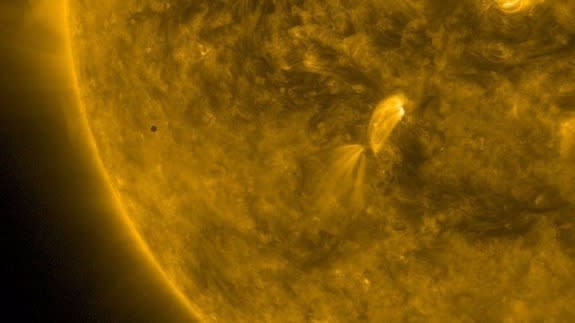The transit of Mercury is producing some awe-inspiring images of our closest star

For the first time in 10 years, Mercury is moving across the face of the sun from Earth's perspective.
People around the world are watching the transit online and in person, taking amazing images of the relatively rare cosmic event.
SEE ALSO: How to watch Mercury pass in front of the sun on Monday
NASA's Solar Dynamics Observatory — a spacecraft that takes high-definition photos of the sun — is even beaming back photos of the transit in close to real-time.
The transit began at 7:12 a.m. and will continue until 2:42 p.m. ET, when Mercury disappears on the other side of the star.
Observers on Earth have already snapped some great photos of Mercury moving across the sun's face.
If you are hoping to catch the transit of Mercury, remember: Do not look at the sun without proper eye protection.
You also need a telescope or binoculars with a solar filter in order to see the transit because Mercury is so small. In fact, the planet is so tiny that it's dwarfed by some of the larger sunspots on the sun's face today, but you can pick Mercury out because of its round, regular shape.
If you aren't able to see the transit in person, you can check it out online thanks to a few different webcasts from NASA, Slooh and Sky & Telescope magazine embedded below.
Broadcast live streaming video on Ustream
Scientists are keeping a close eye on the transit of Mercury in order to learn more about the tiny planet closest to the sun. Thanks to the back-lighting provided by the sun during the transit, researchers should be able to observe the planet's very thin atmosphere.
And even scientists hunting for alien planets around other stars are excited about the transit of Mercury. Some telescopes look for alien planets by detecting small dips in starlight created when planets pass in front of distant stars from Earth's perspective.
Gathering more data about how much light Mercury blocks from the sun during the transit could help scientists further refine how they look for small alien worlds in other solar systems.